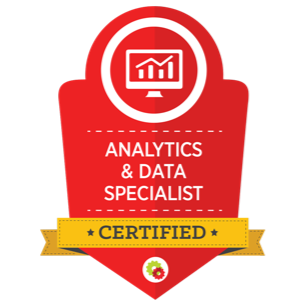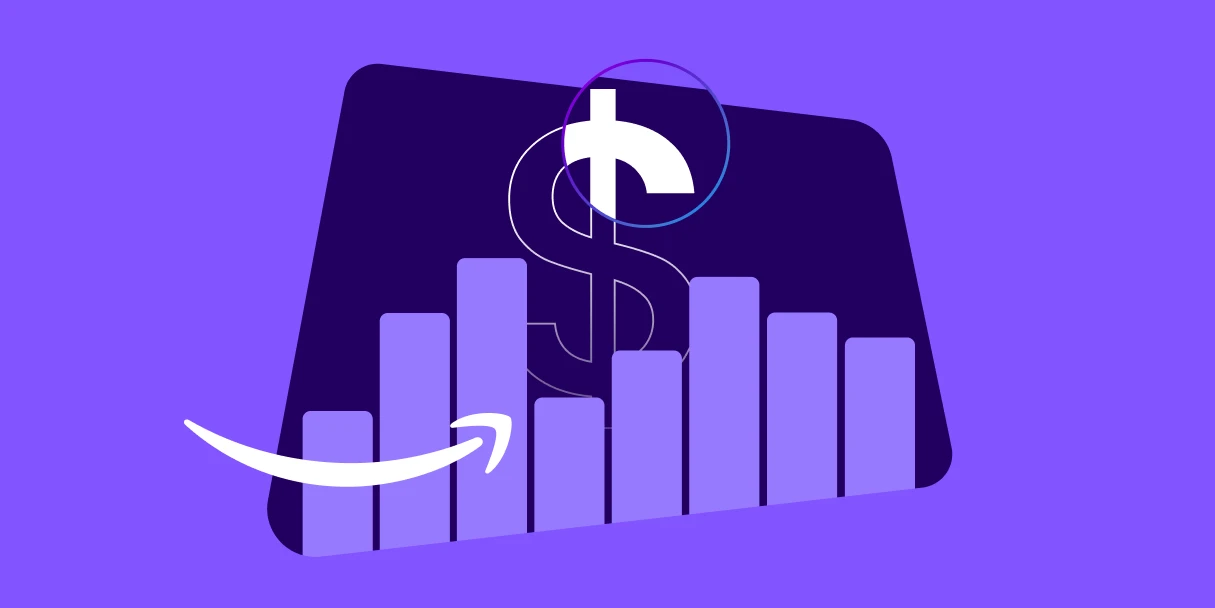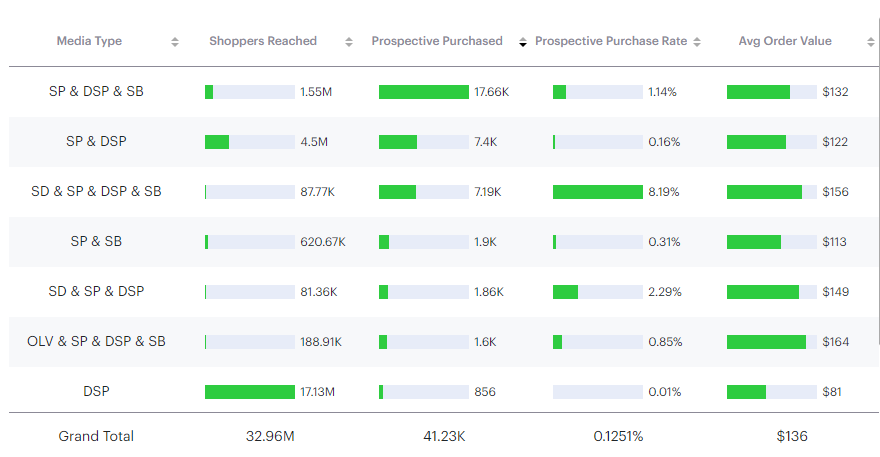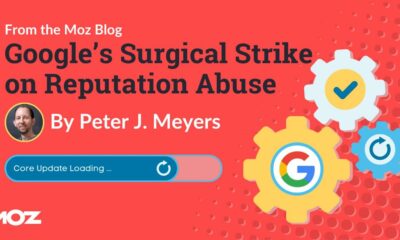MARKETING
Unlocking the Power of AI Transcription for Enhanced Content Marketing Strategies

Have you noticed how artificial intelligence (AI) is slowly integrating into, well, everything? Then it won’t surprise you to hear that it’s also infiltrated content marketing.
How can AI enhance your content marketing? Through AI transcription.
Want to learn how?
Why AI Transcription is Revolutionary
AI transcription is transforming the way we access and interact with information. Here’s how it’s changing the game:
Rapid Content Transformation
Imagine turning a one-hour podcast or webinar into a comprehensive text document in minutes.
AI transcription allows for quick conversion of long-form audio and video content, making it a breeze to repurpose these materials into articles, blogs, or reports.
This means you’re spending a lot less time working on making your content as accessible as possible—the AI is doing it for you—and more time on simply creating new content.
Inclusivity and Accessibility
By providing a text version of audio and video content, AI transcription breaks down barriers for people with hearing impairments. This widens your audience.
It also aids non-native speakers in understanding the content better by allowing them to read along, improving comprehension and engagement.
Content Amplification
With AI transcription, a single piece of content can be repurposed into a multitude of formats.
For example, a transcribed interview can be used to create an in-depth blog post, several engaging social media posts, and even quotes for infographics. This not only amplifies your content’s reach but also maximizes the return on investment for every piece of content created.
SEO Benefits
Transcripts can be a goldmine for SEO. They are rich in keywords spoken naturally during conversations. Including these transcripts on your website or blog can significantly improve your search engine ranking by providing more content for search engines to index.
Real-Time Engagement
With real-time transcription services, audiences can follow along with live events, like conferences or webinars, through captions. This enhances the interactive experience and viewers don’t miss out on important information.
AI transcription is revolutionary because it democratizes content, making it accessible and usable in a variety of formats. It caters to a global audience, and multiplies the impact of the original content, all while improving SEO and user engagement.
Integrating AI Successfully
To truly tap into the power of AI transcription, you need a game plan. It starts with picking the right AI transcription service—one that’s not only accurate but also savvy with the lingo of your field.
Here’s how you can integrate AI transcription into your workflow like a pro:
Record Quality Content
The clearer your audio or video recording, the better your transcription will be. Invest in good recording equipment, minimize background noise, and ensure speakers articulate clearly. Think of it as laying the groundwork for flawless transcription.
Transcribe with AI
Once you have your high-quality recording, it’s time to let the AI work its magic. Upload your file to AI technology like Clipto and let it transform your spoken words into written text. This step is where the tech shines, turning hours of audio into text in minutes.
Edit and Polish
AI is smart, but it’s not perfect. Review the transcript for any errors or awkward phrasings. Adjust any text you need to. This editing process ensures the final product is not only accurate but also engaging and readable.
Incorporate into Your Strategy
Now that you have your polished transcript, use it to upgrade your marketing materials. Transcripts can be repurposed into blog posts, social media content, eBooks, or even used to enhance video and podcast SEO by providing searchable text.
AI transcription is a dynamic tool that can extend your capabilities. By treating AI as a collaborative partner, you can enhance your content marketing efforts, making your message clearer, more accessible, and far-reaching. Integrating AI transcription allows you to engage with your audience on multiple levels.
Spicing Up Your Content with AI Transcription
Let’s get real—AI transcription is more than just a fancy way of turning chatter into text. It’s a secret weapon in your content marketing arsenal.
Boosting Quality and Nailing Relevance
Think about it: when you transcribe your audio and video goodies, you’re capturing every little detail and nuance that might have slipped by unnoticed. Here’s the scoop:
- Accuracy is Key: With AI, you can nail the exactness of your content, catching the subtle hints and expressions that give it flavor.
- SEO Magic: Those transcripts are like SEO gold, stuffed with keywords that naturally pop up in conversation, giving your site’s visibility a hearty push.
And the cherry on top? AI transcription can sort out the big themes in your content, keeping your marketing vibe consistent and spot-on across all platforms.
Digging into Data
Now, here comes the detective work. AI transcription lays out all the juicy data about what your audience loves (and doesn’t). With this goldmine of info, you can:
- Analyze Engagement: Spot the hotspots in your videos or podcasts where people hang on every word—and where they hit the fast-forward button. This insight is like a roadmap to your audience’s heart.
- Strategize with Confidence: Armed with data, you can tweak your topics, amp up engagement, and keep your audience coming back for more.
So, by turning your spoken content into text, you’re not just filling up space. You’re diving deep into the analytics pool for a smarter, more data-driven approach to content marketing. It’s about getting down to the nitty-gritty of what your audience really likes, making every word you publish count.
Bottom Line
It’s clear that AI transcription is not just a fleeting trend but a robust ally in the realm of content marketing. Equipped with tools to make your message not only heard but felt across the globe.
From crafting precision-packed text that search engines adore to unveiling layers of audience insights waiting to be explored, AI transcription is your go-to for making every piece of content count.
MARKETING
Being position-less secures a marketer’s position for a lifetime

On March 20, 2024, the Position-less Marketer was introduced on MarTech.org and my keynote address at Optimove’s user conference.
Since that initial announcement, we have introduced the term “Position-less Marketer” to hundreds of leading marketing executives and learned that readers and the audience interpreted it in several ways. This article will document a few of those interpretations and clarify what “position-less” means regarding marketing prowess.
As a reminder, data analytics and AI, integrated marketing platforms, automation and more make the Position-less Marketer possible. Plus, new generative AI tools like ChatGPT, Canna-GPT, Github, Copilot and DALL-E offer human access to powerful new capabilities that generate computer code, images, songs and videos, respectively, with human guidance.
Position-less Marketer does not mean a marketer without a role; quite the opposite
Speaking with a senior-level marketer at a global retailer, their first interpretation may be a marketer without a role/position. This was a first-glance definition from more than 60% of the marketers who first heard the term. But on hearing the story and relating it to “be position-less” in other professions, including music and sports, most understood it as a multidimensional marketer — or, as we noted, realizing your multipotentiality.
One executive said, phrasing position-less in a way that clarified it for me was “unlocking your multidimensionality.” She said, “I like this phrase immensely.” In reality, the word we used was “multipotentiality,” and the fact that she landed on multidimensionality is correct. As we noted, you can do more than one thing.
The other 40% of marketing executives did think of the “Position-less Marketer” as a marketing professional who is not confined or defined by traditional marketing roles or boundaries. In that sense, they are not focused only on branding or digital marketing; instead, they are versatile and agile enough to adjust to the new conditions created by the tools that new technology has to offer. As a result, the Position-less Marketer should be comfortable working across channels, platforms and strategies, integrating different approaches to achieve marketing goals effectively.
Navigating the spectrum: Balancing specialization and Position-less Marketing
Some of the most in-depth feedback came from data analytic experts from consulting firms and Chief Marketing Officers who took a more holistic view.
Most discussions of the “Position-less Marketer” concept began with a nuanced perspective on the dichotomy between entrepreneurial companies and large enterprises.
They noted that entrepreneurial companies are agile and innovative, but lack scalability and efficiency. Conversely, large enterprises excel at execution but struggle with innovation due to rigid processes.
Drawing parallels, many related this to marketing functionality, with specialists excelling in their domain, but needing a more holistic perspective and Position-less Marketers having a broader understanding but needing deep expertise.
Some argued that neither extreme is ideal and emphasized the importance of balancing specialization and generalization based on the company’s growth stage and competitive landscape.
They highlight the need for leaders to protect processes while fostering innovation, citing Steve Jobs’ approach of creating separate teams to drive innovation within Apple. They stress the significance of breaking down silos and encouraging collaboration across functions, even if it means challenging existing paradigms.
Ultimately, these experts recommended adopting a Position-less Marketing approach as a competitive advantage in today’s landscape, where tight specialization is common. They suggest that by connecting dots across different functions, companies can offer unique value to customers. However, they caution against viewing generalization as an absolute solution, emphasizing the importance of context and competitive positioning.
These marketing leaders advocate for a balanced marketing approach that leverages specialization and generalization to drive innovation and competitive advantage while acknowledging the need to adapt strategies based on industry dynamics and competitive positioning.
Be position-less, but not too position-less — realize your multipotentiality
This supports what was noted in the March 20th article: to be position-less, but not too position-less. When we realize our multipotentiality and multidimensionality, we excel as humans. AI becomes an augmentation.
But just because you can individually execute on all cylinders in marketing and perform data analytics, writing, graphics and more from your desktop does not mean you should.
Learn when being position-less is best for the organization and when it isn’t. Just because you can write copy with ChatGPT does not mean you will write with the same skill and finesse as a professional copywriter. So be position-less, but not too position-less.
Position-less vs. being pigeonholed
At the same time, if you are a manager, do not pigeonhole people. Let them spread their wings using today’s latest AI tools for human augmentation.
For managers, finding the right balance between guiding marketing pros to be position-less and, at other times, holding their position as specialists and bringing in specialists from different marketing disciplines will take a lot of work. We are at the beginning of this new era. However, working toward the right balance is a step forward in a new world where humans and AI work hand-in-hand to optimize marketing teams.
We are at a pivot point for the marketing profession. Those who can be position-less and managers who can optimize teams with flawless position-less execution will secure their position for a lifetime.
MARKETING
Profit More, Work Less: 4 Steps to Niching Down For Your Agency


Ever wonder what the most successful agencies did differently than everyone else?
Was it luck, skill, hard work, the industry they chose, or something else?
Through my consulting work at Revenue Boost, I’ve worked with and taught over 400+ agencies how to scale their business.
From this, I’ve seen consistent patterns & traits in the ones who grow effortlessly…
Versus the ones who stay stuck for years – no matter how hard they work.
One key difference in approach stuck out to me.
I’ll illustrate what this one difference was with a story.
Once upon a time…
Two marketers graduated from business school with big plans to start their own agency.
Ready to conquer the world, they started cold calling, cold emailing, and doing everything under the sun to get clients.
And although they had the SAME levels of work ethic and talent…
One of them now has an 8-figure agency.
The other one of them is still freelancing odd jobs, barely making ends meet.
What did the successful one do differently?
He took a big risk and started turning down clients and projects.
Instead of offering everything to everyone, like most agency owners…
And being a jack of all trades but a master of none…
He decided only to serve Plumbers and be the best dang’ plumbing marketer on the planet.
With a goal to make their pipeline fuller than a broken toilet pipe.


He mastered the art of niching down and realized it would be easier to be the biggest fish in a small pond.
And you should too – and in this article, you’ll learn exactly how to define your own niche.
Now it may seem scary to turn down clients…and it may feel like you’re limiting yourself by focusing on only one client-type.
But it’s exactly the opposite. You’re actually limiting yourself by being everything for everybody.
Niching Down Can Help 2x-3x Your Revenues
One of my clients Lauren ran a digital agency offering everything under the sun.
Social media, paid ads, web dev, SEO, and she offered it to clients from many different industries.
Because of this, her agency stayed stuck at $25,000 a month and she couldn’t break through.
On top of that, she and her team worked so much harder than they had to and operations were messy.
Every client needed different things, required customization, and nothing was standardized.
We sat together to audit all her past clients, and we found that Medical practices were her best clients.
They were easy to sell, stayed the longest, and gave her the least amount of headaches and complaints.
So, she changed her entire business model to ONLY service this industry.
Then, she developed a standardized offer for that industry, rather than customizing everything.
One offer, to one target market. Afterwards, she started cold emailing businesses in her niche with her new offer.
The Results?
She 2X’d her revenues and grew to $52,000 in monthly revenue in not even four months time.
All from making one simple shift. One decision that can make everything easier, and you can do the same.
See, most agency owners and marketers start out with one or two clients, and then they get referred new clients from various industries.
Before they know it, they’re marketing everything for everyone and have NO idea who their ideal client is.
The Problem with Running a Business This Way Is That It Becomes Impossible to Scale.
Every single new client requires a ton of research, thought, and brainpower.


Because each new client has different needs, it leads to having no standardized processes and systems.
Which keeps the founder stuck in the business and unable to hire a team.
The other problem that arises is acquisition.
There are hundreds of thousands of agencies on the planet, and it’s really hard to stand out.
UNLESS you specialize.
When you specialize in a niche – let’s say, SEO for plumbers…
Then you aren’t competing with every other agency on the planet. You don’t look and sound just like them anymore.
Now, you’ve created your own tiny pond in which you can be a big fish.
There are way fewer agencies that specialize in plumbers or SEO, let alone both. So, you’ve eliminated the competition with one decision.
If a plumber was looking at two agencies – one that was a general digital agency and one that specializes in helping plumbers…
They almost always choose the agency that specializes in their industry and has testimonials from people just like them.
Not to mention, it’s easier to market when you have a clear niche in mind.
You know who you’re writing your content for…
You know who to send emails and social media DMs too…
You know exactly who to target in your ads….
You know what podcasts you should get booked on
And so on and so on.
Plus, you can charge whatever prices you want. Because you aren’t compared to the hundreds of thousands of agencies out there – you have a unique offer now.
Committing to one niche makes marketing easier, it makes selling easier, and it makes scaling easier.
You only have to be good at doing 1 thing for 1 person, and you can build systems and processes around it. This way, you can hire a team to take it over and be able to work less.


Become a Certified Analytics & Data Master
At Last, You’ll Have A Powerful Analytics Dashboard That Will Help You Make Smart Business Decisions
Now how do you do it? What if you don’t know who your ideal client is?
Step 1: Audit Your Current + Past Client List.
Write down every single client you’ve ever served, and group them by niche. Industry, location, size and so on.
Once you group them together, one niche might stick out for you already as your favorite type of client.
If it doesn’t, use my 7-Point checklist and rank each niche on a 1-5 scale.
These 7 criteria points are what makes a great niche.
#1 – Total Addressable Market:
How many businesses are in this market? Is it large enough to support your bigger goals? Is the market shrinking or growing? Make sure the niche is big enough for you and that it’s not declining.
#2 – Purchasing Power
Is this market (or at least a segment of it) able to afford what you want to charge?
Think back to if you’ve received a lot of pricing objections when you’ve sold to these people in the past.
#3 – Lifetime Value
How long did these clients stay? Were they one-and-done projects or did they stay with me for eternity?
The bigger the life-time value, the more money and time you can spend to acquire a client.
If the niche typically churns in a few months or only works with you for quick, one-off projects…
Then you’ll have to spend so much energy on sales and marketing to keep the business alive.
#4 – Strong Need & Pain
Does this market have an important problem to solve, one that they have to fix? Or, is what you sell just a “nice to have”?
If the latter, it’s going to be very hard to get clients.
If they can’t live without your solution, then getting clients will be a breeze.
#5 – Desire to Solve that Pain
It’s one thing for a market to have a problem, but they must also have a desire to solve that problem.
Even if they have the need that you fulfill, that’s not enough – they also have to care about fulfilling that need.
#6 – Easy to Reach
Is the market fairly easy to find online? Can you reach them via most advertising platforms and social channels? Are their groups and communities online?
If you’re targeting businesses that are hard to reach online, you’re creating one extra barrier to your success.
Step 2: Choose 1 Niche After Ranking Each of Your Past Clients.


Tally up all the rankings and pick the 1 with the highest score.
Don’t worry about making the wrong decision.
Consider this an experiment.
You aren’t married to your new niche, you can always change back in a few months if it doesn’t work out.
Step 3: Create a Pre-Packaged Offer for Your New Niche
The whole point of niching down is to create more focus and simplicity in your business
Part of this is about WHO you sell, part of this is about WHAT you sell them.
Start out by choosing 1 problem to solve for them, and 1 solution to that problem.
List out what the deliverables will be and what you want to charge.
Keep it simple! You can build upon this later.
Step 4: Test the Waters and Go Land 5 New Clients.
Before you make any drastic changes to your business, such as letting go of clients, changing your branding and website…
Test the waters first, and verify if this new niche is the direction you want to go.
Go land another 5 clients or so, and that’ll be enough to identify if these are really our ideal clients or not.
You might think they are at first but you’ll know for sure once you serve more of them.
Wrapping Up…
You know now the problems of being a jack-of-all-trades with no clear focus.
Every new client is a ton of work and requires customization…
And getting new clients is difficult because there’s nothing that stands out about your agency. You’ll look and sound like everyone else.
This means when you do niche down, and sell 1 offer to 1 target market…
Your workload will decrease. Each new client will be easier to serve than the previous one.
You’ll become world-class at helping your clients from all the focused repetition
You’ll quickly develop a reputation and become a big fish in a small pond.
In every way, it’ll become easier to grow, scale, attract, and retain clients.
Plus, you’ll have more fun and the business will be simpler & easier to run.
And with this knowledge…
You’ve learned the 5 simple steps to niching down.
So…
Time to get to work!
Put this into practice and watch it transform your business.
MARKETING
Unlocking AMC Insights Series: Leveraging Media Overlap Analysis for Enhanced Conversions

In today’s data-driven marketing landscape, the ability to ask the right questions is paramount. Amazon Marketing Cloud (AMC) emerges as the magic 8-ball of advertising solutions, offering advertisers a robust platform for precise analytics and strategic decision-making. If you’re new to AMC, it’s a secure, privacy-friendly, dedicated cloud-based measurement and analytics solution introduced in 2021.
Understanding the Value of Amazon Marketing Cloud
Built on Amazon Web Services (AWS), AMC provides a flexible environment that empowers advertisers with customizable reporting capabilities based on event-level data across various data sets. These data sets can encompass both advertiser data and Amazon Advertising data, granting advertisers a comprehensive view of campaign performance. In essence, AMC equips advertisers with transparent, cross-channel data essential for making informed marketing decisions, a necessity in today’s marketing landscape.
For a comprehensive understanding of AMC basics, Tinuiti’s AMC overview provides all the essential information about the Amazon Marketing Cloud.
This article marks the first of a 3-part series where we dive into specific AMC use cases. In this installment, we focus on the Media Overlap analysis, guiding you through utilizing this report to address critical business questions, pinpoint key metrics, and strategically apply derived insights.
What is the Media Overlap Analysis?
The Media Overlap analysis determines the collective impact of Amazon ads and isolates the incremental impact of a specific media type. The metrics provided by this report analyze reach and performance across a full-funnel strategy, including DSP Display, Streaming TV, and Sponsored Ads.
To utilize this report, it is required to have data from at least two of the aforementioned ad types in a single AMC instance. The same products must be advertised in each ad type, and each ad product must have been running for at least one week during the same time period. It is recommended to wait 14 days after the query’s end date to use this analysis to capture all conversions due to Amazon’s 14-day attribution window. This use case is designed to help answer business questions surrounding how to best leverage the array of Amazon Ad products.
Here are a few examples of the types of questions the Media Overlap analysis addresses:
- When shoppers are exposed to any combination of Display, Streaming TV, Sponsored Ads, what is the impact on conversion rates?
- What impact does each ad type have on conversion beyond ROAS or last-touch attribution?
- What is the average order value when shoppers are exposed to a combination of ad types?
The following metrics tend to be the most useful in addressing the business questions above:
- Purchase rate: Percentage of unique users who purchased at least one time compared to unique users reached
- Reach: Number of unique users reached
- Users that purchased: Number of unique users who purchased at least one time.
- Purchases: Number of times any amount of a promoted product or products are included in a purchase event. Purchase events include video rentals and new Subscribe & Save subscriptions.
- Order value: Total amount resulting from a single purchase event
Below is a sample case study used to address the following question: When shoppers are exposed to any combination of Display, Streaming TV, Sponsored Ads, what is the impact on conversion rates?
Here is an example of a what a finalized report looks like:
Top 7 Media Type Mixes based on Purchase Volume (CE Advertiser)

To answer the original question, the key metric to review here is the Prospective Purchase Rate (PPR). When exposed to fewer than three ad types, the PPR is significantly lower. However, when exposed to three or more ad types, the PPR increases. For users who were exposed to Sponsored Display (SD), Sponsored Products (SP), Demand Side Platform (DSP), and Sponsored Brands (SB) ads, the PPR was 8.19%, demonstrating the correlation between the number of ad types shoppers were exposed to and an increased Prospective Purchase Rate.
As a result of these findings, two prominent potential opportunities to improve performance emerge:
- Continuing to invest, or increasing investments, in DSP and video as they are key drivers in a user’s path to conversion. The advertiser should diversify their media mix with these ad products.
- Due to the correlation between Sponsored Products ads in combination with other ad products and higher conversion rates, there is an additional opportunity to build an AMC audience retargeting SP clickers. This will ensure advertisers are capitalizing on shoppers moving through the lower to upper funnel in their shopping journey.
AMC’s Media Overlap Analysis: Key Takeaways and Next Steps for Enhanced Conversions
AMC’s Media Overlap analysis highlights the impact of middle and upper funnel ads on conversion rates. Tinuiti’s teams observe many brands prioritizing Sponsored Products due to their perceived low risk and high returns under Amazon’s last-touch attribution model. However, this approach overlooks the influence of other ad types. Data from this analysis underscores the effectiveness of a holistic strategy. While a Sponsored Products ad may lead to a sale, it doesn’t consider other ad exposures that shape purchase decisions. The Overlap analysis underscores the value of a full-funnel strategy and the impact of DSP media on overall performance. Advertisers should consider adjusting budget allocations to DSP and streaming video based on these insights.
Furthermore, a full-funnel strategy can drive higher average order value.
The average order value significantly increases when exposed to a media mix of three or more ad types. While each advertiser should analyze their own business, Tinuiti consistently observes that users exposed to a greater number of ad products typically correlate with higher conversion rates and higher order values.
The Media Overlap analysis is part of the Instructional Query Library (IQL), which offers pre-built templates by Amazon to get started with the basics. If you’re seeking deeper insights with the guidance of experts who understand AMC’s unique landscape, reach out to Tinuiti today.
Liked this article? Don’t miss Part 2 of our AMC use case series on Tinuiti’s blog next month!
This post was authored by Averie Lynch, Specialist of Strategic Services at Tinuiti.
-

 PPC7 days ago
PPC7 days agoHow to Capture Your YouTube Ads Audience in 5 Seconds
-

 PPC7 days ago
PPC7 days ago86 Summer-Ready June Content Ideas
-

 MARKETING5 days ago
MARKETING5 days ago3 Contextual Link-Building Strategies That Actually Work
-

 MARKETING6 days ago
MARKETING6 days agoGoogle’s Surgical Strike on Reputation Abuse
-

 SOCIAL7 days ago
SOCIAL7 days ago12 Proven Methods to Make Money Blogging in 2024
-

 PPC5 days ago
PPC5 days agoGoogle Ads Releases New Search Partner Insights & Controls Following Advertiser Concerns
-

 PPC6 days ago
PPC6 days ago5 Campaign Red Flags And Why They Matter
-

 SEO5 days ago
SEO5 days agoChatbots And AI Search Engines Converge: Key Strategies For SEO
















